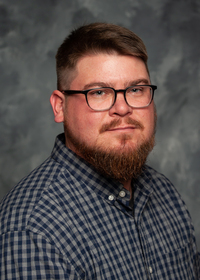How to SipSafe: Guide
Why water testing?1,2
- Infants and children are at a higher risk for lead exposure than adults. This risk of lead exposure comes from drinking tap water. It is useful to take proactive measures to keep children safe.
How does lead get into drinking water?1,2,3
- Copper pipes with lead solder made or installed before 1986.
- Lead service lines.
- Lead plumbing systems.
The good news!1,2
- With a few simple steps, lead exposure can be decreased.
Goals for SipSafe
- Test water for lead to prevent further lead exposure.
- Participate in SipSafe training to use safe practices for reducing lead in drinking water.
- Communicate clearly with parents about steps being taken to protect their children from further exposure.
- Protect the health and well-being of children and staff throughout this program.
How do we get started?
- On-site water samples will be taken by an MSU Extension employee for testing purposes.
What are we looking for?
- We hope to find no significant traces of lead in the water.
Protocol for testing
- The evening before the samples are collected, the number and location of faucets and water fountains will be recorded.
- The samples will be collected in the morning, before any active use by the facility.
- A water sample from each faucet will be taken and labeled.
Results
- Within 2 weeks of the initial tests, results will be shared with the facility to determine if action is needed.
Taking action
- If lead is found in a sample, steps will be taken to decrease lead levels in the water through SipSafe training.
- If lead levels in the sample exceed the action level of 15 ppm, results will be documented. Recommendation for replacement and remediation will take place.
1CDC’s Childhood Lead Poisoning Prevention Program (https://www.cdc.gov/nceh/lead/about/program.htm).
2CDC’s Lead fact sheet (https://www.cdc.gov/biomonitoring/Lead_factsheet.html).
3EPA’s Basic Information about Lead in Drinking Water (https://www.epa.gov/ground-water-and-drinking-water/basic-information-about-lead-drinking-water).
This project is funded by the Water Infrastructure Improvements for the Nation Act 2107: Lead Testing in School and Child Care Program Drinking Water Grant.
For more information, please contact Jason R. Barrett at jason.barrett@msstate.edu or visit extension.msstate.edu.
Is your childcare center part of this project? Please take this brief survey and tell us what you think!
Publication 3483 (01-24)
By Leah Gann, former Graduate Student, Agriculture and Extension Education; Carley C. Morrison, PhD, Assistant Professor, Human Sciences; and Jason R. Barrett, PhD, Associate Extension Professor, and Justin Palmer, Extension Associate, Water Resources Research Institute.
The Mississippi State University Extension Service is working to ensure all web content is accessible to all users. If you need assistance accessing any of our content, please email the webteam or call 662-325-2262.




